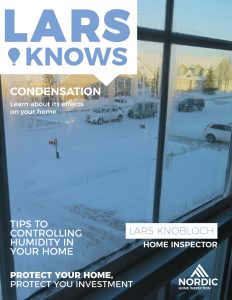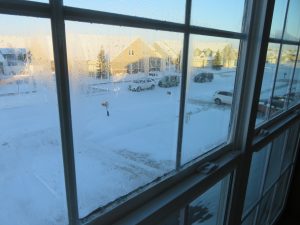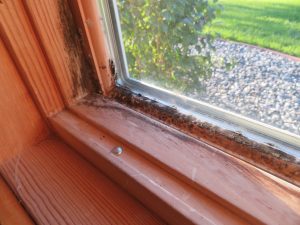Controlling humidity in your home
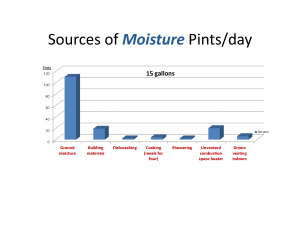
Most people think that the majority of the moisture in a home comes from everyday activities like cooking, showering and laundry. However, a typical home emits 15 gallons of water a day into the air through its basement and foundation. That’s right, 15 gallons. Having moisture in your home is important year-round for better health and air quality, but having too much can lead to mold, rot and the deterioration of the value of your property. As homeowners, it’s essential to keep moisture at desired levels. In the winter, too much moisture can easily be identified. Look for condensation on any cold surface around your home. Some prime areas to watch are windows, doors and exterior corners in a room. Moisture built up here can cause mold, rot wood and overall create problems in your home. Let’s take a look at how to help this situation.
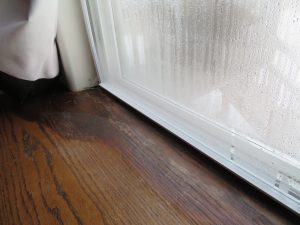
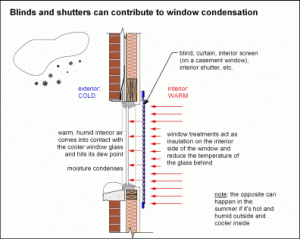
Why water builds up
To keep water from condensing inside your home, you need to adjust your humidity according to the outdoor temperature. This is why we see condensation on windows, doors and exterior corners, these are areas that fluctuate the greatest when the temperature drops.
The colder the surface, the lower dew point needed to condense water. Blinds do a great job to insulate your windows, but they also trap cold air between the glass and blinds and allow for water to condense and ice over. Because of this, it is important that you open your window coverings daily. Opening your blinds just a quarter of the way up allows air to flow and water to evaporate.
An essential part of the condensation/ humidity problem is that homes now are built air tight and energy efficient. In an older home, the 15 gallons of moisture will escape through walls and ceilings (windows, doors, etc.) as older homes are draftier. In an air tight, energy efficient home, the moisture will be trapped in the home and condense on the colder surfaces inside.
You can prevent water build-up
It is obviously easiest to fix this problem before it begins. In new construction, use a moisture barrier between your home and anywhere it touches the earth. This would be the floor and, where applicable, walls of the lowest level of your home. This would prevent water from permeating into your home.
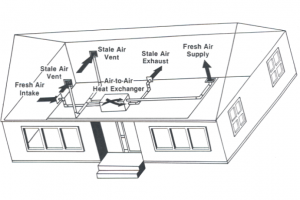 Take care of your current home
Take care of your current home
One option to control humidity is to install an air to air heat exchanger into your home. This unit plays an important role to improve indoor air quality. The state of Minnesota made including these important pieces of equipment required in their 2015 building code. The cost of a unit is around $2,500. Basically, the air to air heat exchanger is connected to your heating system and mixes the heated air in your home with fresh air from outside. They improve humidity levels in a home while improving air quality by removing the stale and humid air that builds up throughout the winter months. The unit should be turned off in warmer months unless it has a “summer-mode” function that still circulates the air in the home, but prevents the system from pulling hot and humid air into the home. As homes become more energy efficient and “tighter” there’s a greater need for fresh air, and the air to air heat exchanger delivers.
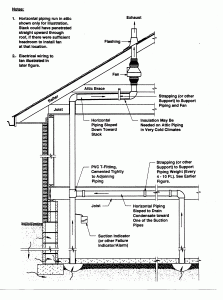
A second option is to install a radon mitigation system. Now wait a minute, we’re talking about humidity, not radon – but hear us out. A radon mitigation system goes deeper to the source of the problem as it doesn’t even allow moisture to come into a home. An enormous bonus exists in this system being able to reduce radon. This system works with your already existing sump pump and drain tile. It functions by installing a pipe from your sumphole to the top floor of your home. This pipe is then fitted with a fan and exhausts outside. Here’s where the magic happens: The sump hole is completely sealed making air leaks impossible. By doing so, the exhaust fan creates a vacuum that draws vaporized moisture and radon from your entire drain tile system and vents it outdoors. The moisture doesn’t have the chance to permeate your foundation. The cost to install a radon mitigation system in a standard single family dwelling is typically $1,200-$1,400 while the fan itself is quiet and inexpensive to run.


